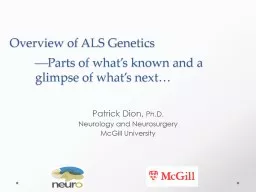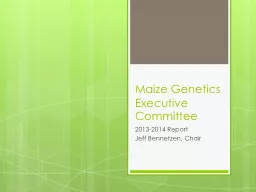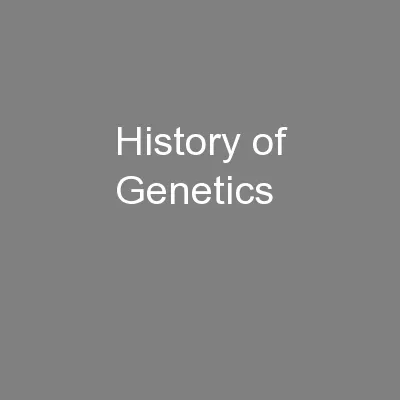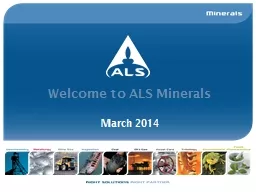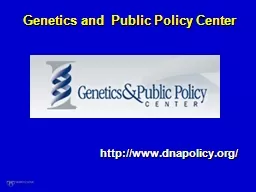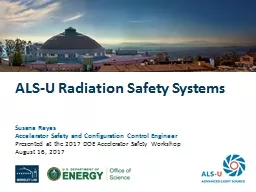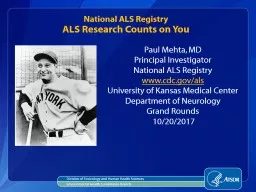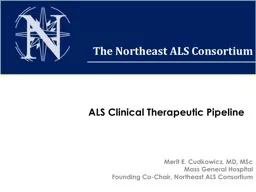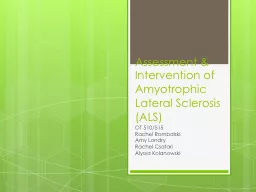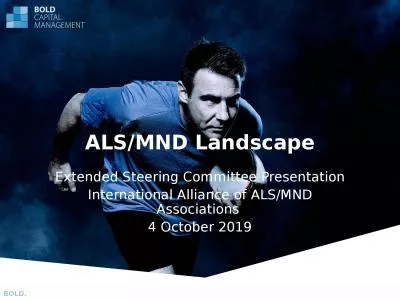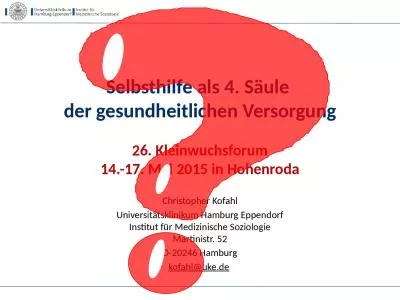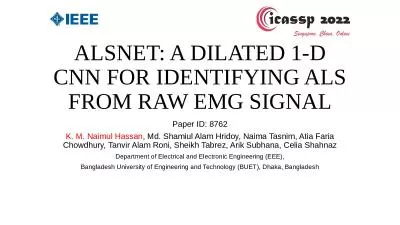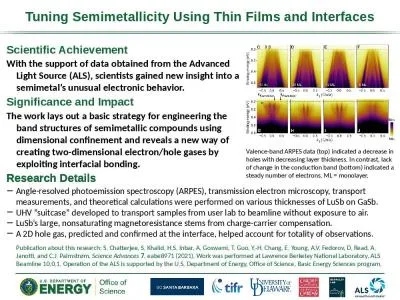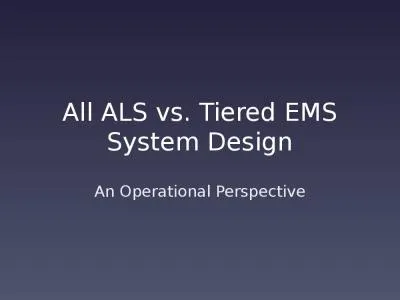PPT-Overview of ALS Genetics
Author : broadcastworld | Published Date : 2020-06-15
Parts of whats known and a glimpse of whats next Patrick Dion PhD Neurology and Neurosurgery McGill University Human Genome Basics 3 billions base pairs Contains
Presentation Embed Code
Download Presentation
Download Presentation The PPT/PDF document "Overview of ALS Genetics" is the property of its rightful owner. Permission is granted to download and print the materials on this website for personal, non-commercial use only, and to display it on your personal computer provided you do not modify the materials and that you retain all copyright notices contained in the materials. By downloading content from our website, you accept the terms of this agreement.
Overview of ALS Genetics: Transcript
Download Rules Of Document
"Overview of ALS Genetics"The content belongs to its owner. You may download and print it for personal use, without modification, and keep all copyright notices. By downloading, you agree to these terms.
Related Documents

